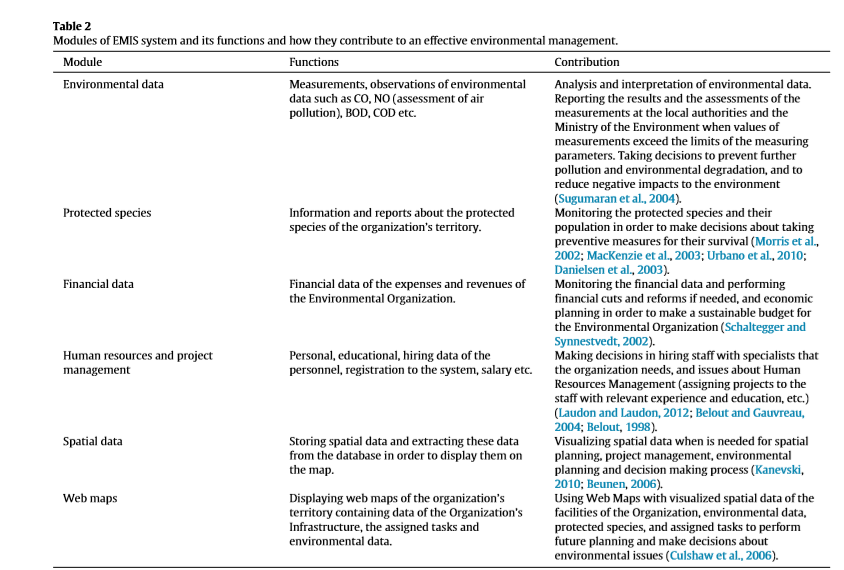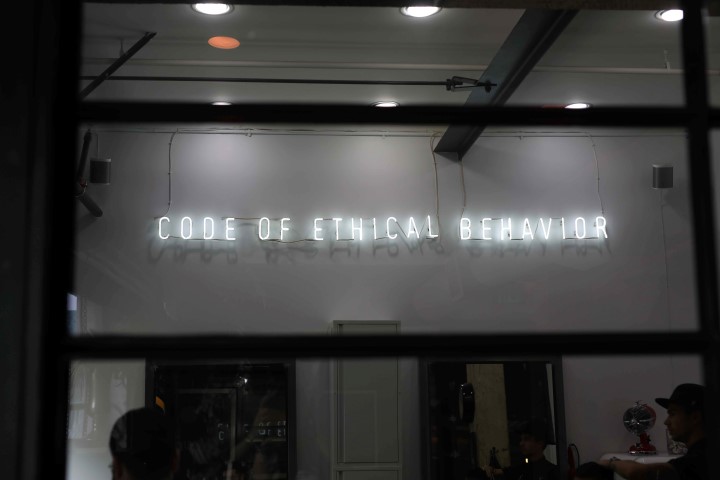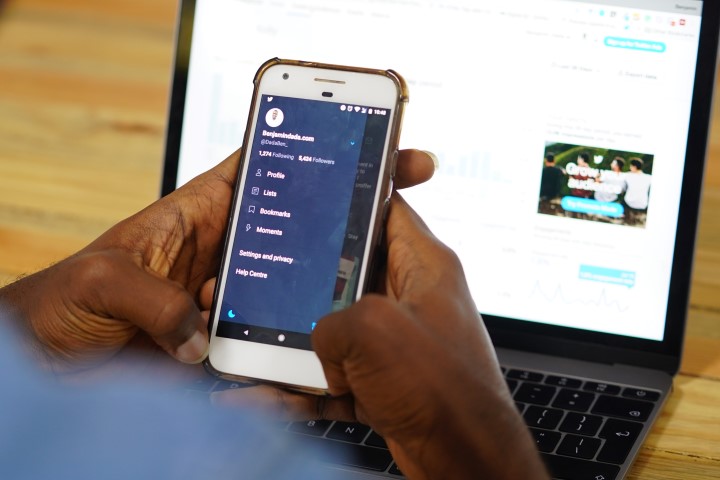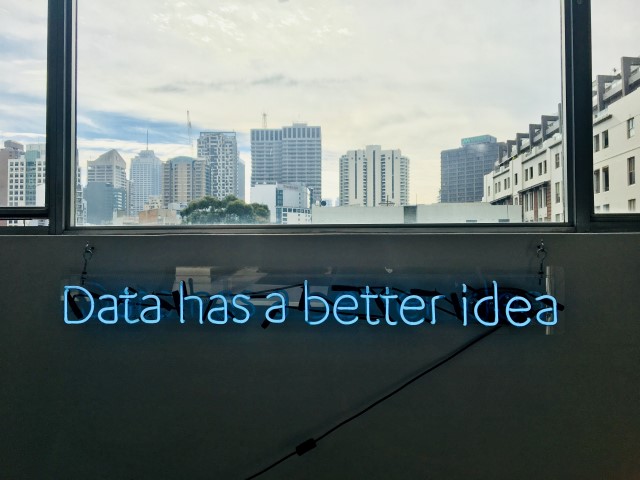
Photo by Alex Knickerbocker on Unsplash
The academic article I chose to read was written by Georgios N. Kouziokas, and titled “Technology-based management of environmental organizations using an Environmental Management Information System (EMIS): Design and development”. The title encapsulates what the research paper will contain. It tells me that the paper will be about the design and development of an information technology system called “Environmental Management Information System (EMIS)” to be used as a system for dealing with the data that is being analysed by environmental organisations. (Kouziokas, 2016).
Within the abstract the author outlines that the topic of research paper is regarding a prototype that has been developed to deal with the rapidly increasing amount of information that environmental organisations are dealing with by using Information and Communication Technology. The prototype is utilised as a system of managing environmental data as well as the human resources within environmental organisations.
The design and development of the prototype is discussed in the paper; including the technologies used, and how they combine to achieve the organisational goals of the organisations.
The abstract summarises what has been created and how it can be implemented to allow technology to enhance decision-making processes and the management of environmental organisations.
The research question seems to be “How can Information and Communication Technologies assist in providing a system that will handle large amounts of data in such a way that better decision-making and management can be implemented in environmental organisations?”
The methods used to answer this research question are those of the Design Science paradigm. Initially requirements analysis was carried out to discover the types of data that need to be included within the database and how that data will be drawn out as meaningful information. It also identifies the legal requirements in legislation for how information is held and shared in the ECU. Human resource requirements are also identified. Then existing knowledge is brought into the design by using technology that has been used in actual systems from previous Design Science research to solve the research question. (Kouziokas, 2016).
The technologies that will be used to build the system are then identified. These include the whole architecture of the complete system, how the system will be structured including programming languages, the database management system, programming tools and any other technologies that will need to be used to implement the system such as web-based information systems. (Kouziokas, 2016; Sugumaran, Meyer & Davis, 2004).
Then the design of the EMIS system is discussed and how it will be implemented. The following diagram summarises the modules included in the system and each module’s function and how it contributes to the overall goal.

Source: (Kouziokas, 2016).
I believe the article is credible for the following reasons: It was published in an academic journal “Environmental Technology and Innovation” published by Elsevier. Elsevier is well known and has numerous publications on Google Scholar and within databases such as “Science Direct”. It was published in 2016 which is fairly recent and should still be valid. There are a large number of well cited references from reputable sources drawn on within the article which indicates significant research into the subject under discussion has been carried out. The author is a Ph.D researcher from the School of Engineering at the University of Thessaly with four Masters of Science and has received a number of awards for his research as follows in his profile on Research Gate:
“Ph.D. Researcher. University Teaching Assistant. Awarded with the Emerging Scholar Award 2018 by the University of Illinois USA.Awarded as a Top Peer Reviewer in 2018 in Publons’ global Peer Review Awards (Web of Science).Reviewer in 38 Journals. G.Editor in an international journal about Artificial Intelligence (Indexed in Scopus,Web of Science) & Associate Editor in 5 Journals.Editorial Board member.4 MSc: Applied Mathematics, Information Systems, Spatial Analysis (GIS) & Environmental Management, Contemporary Learning Environments & Curriculum Development.Artificial Intelligence, Educational Informatics, Intelligent Tutoring,Information Systems,Neural Networks, Robotics, Quantum Networks,Cyber Security, Public Management, Environmental Informatics, GIS,Remote Sensing,C++,C#,Java,R,Python.” Retrieved from https://www.researchgate.net/profile/Georgios_Kouziokas on 11 April, 2019.
I found that I agree with the conclusion that the large growth of information within environmental organisations can be managed by a system built using information technologies and communication technologies to create a system that can allow for better management and decision-making. Utilising information and communication technology can address organising large data collections, containing diverse types , which need to be managed and used for decision-making. The other issue is sharing information with governmental organisations and policy makers. I believe it is essential for the future that a way of combining collections of information and sharing can uncover the true state of the environment and needs to be ultimately a global system across different countries to ascertain the patterns and anomalies that exist when looking at the wider scope. Information technology and communication technology are continually finding better and improved applications that can be combined to create an overall system that meets complicated organisational needs.
Two things that I learnt from this article include how putting together different information and communication technologies as separate modules that make up a system can be integrated in such a way that it works as a whole and that it is a high need for environmental organisations to improve their operations to meet their goals by using technology as the rapid growth of data needs a system that can handle it.
This paper looks at a problem – how to manage the rapid growth of data and information within environmental organisations so they can better manage their organisations and thus have improved decision-making capabilities. The analysis of requirements showed the complexity of environmental organisations and what their overall goals are. By looking at every entity within the system and all the data that is held and used is the starting point for an overall system to manage this complexity to be designed and developed. From data collection out in the field, analysis of data by scientists in the lab, training, education, budgets, human resources and the need to provide information for agencies and general management the prototype was designed to draw all this together in such a way that it becomes more manageable and stable. Looking to information and communication technology, different applications and tools were combined into a holistic system to manage the different needs of all the users in the organisation as well as outside stakeholders. Relational database technology was used as the storage component, programming languages were chosen to build an application for users to retrieve from and add data to the database. Web based technologies were added to allow for better communication across geographical distance and to speed up accessing resources from the system. Web based geographical and spatial technologies were added to provide the necessary “maps” so that visual aids could be accessed when making planning decisions. By modularising each technology and then linking them into a system called the “Environmental Management Information System (EMIS)” overall complexities of the organisation could be brought into one system allowing for faster and more accurate operations at all levels of the organisation.(Kouziokas, 2016). This would enable more stability and reliability of information gathering as well as meeting security requirements for holding data. Modernising the organisation by using information technology is a way for the organisations to be more effective in meeting their overall goals as well as planning for the future.
References:
Kouziokas, G. N. (2016). Technology-based management of environmental organizations using an Environmental Management Information System (EMIS): Design and development. Environmental Technology & Innovation, 5, 106-116.
Sugumaran, R., Meyer, J. C., & Davis, J. (2004). A web-based environmental decision support system (WEDSS) for environmental planning and watershed management. Journal of Geographical Systems, 6(3), 307-322. Kingston, R., Carver, S., Evans, A., & Turton, I. (2000). Web-based public participation geographical information systems: an aid to local environmental decision-making. Computers, environment and urban systems, 24(2), 109-125.
Research Gate (n.d.) https://www.researchgate.net/profile/Georgios_Kouziokas
retrieved on 11 April 2019.











